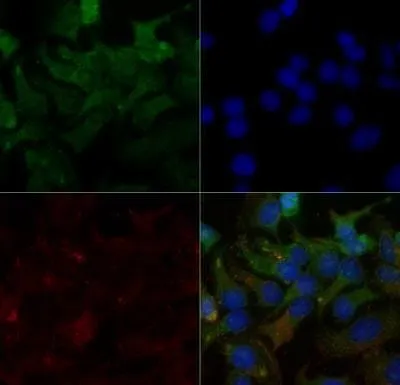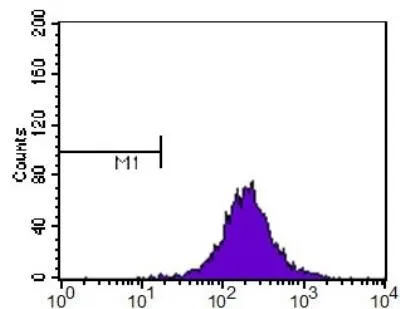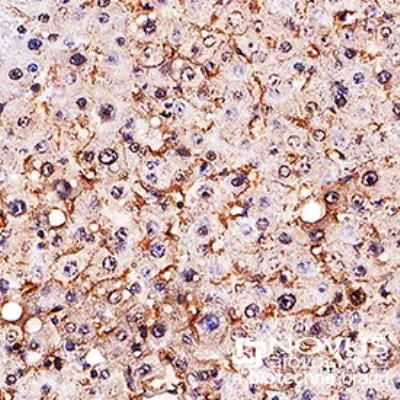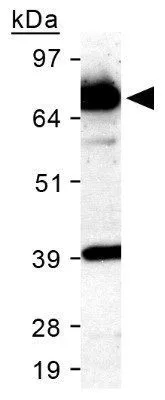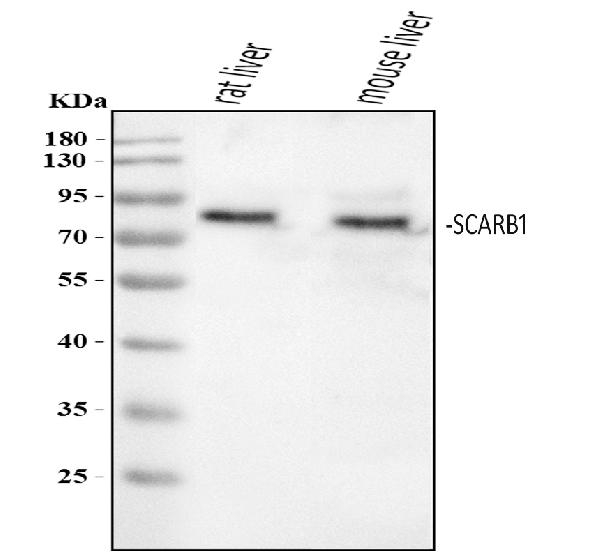
WB analysis of HeLa cell lysate using GTX20003 SR-BI antibody.
SR-BI antibody
GTX20003
ApplicationsFlow Cytometry, ImmunoFluorescence, ImmunoPrecipitation, Western Blot, ImmunoCytoChemistry, ImmunoHistoChemistry, ImmunoHistoChemistry Frozen, ImmunoHistoChemistry Paraffin, Neutralisation/Blocking
Product group Antibodies
ReactivityBovine, Hamster, Human, Mammals, Mouse, Primate, Rat, Schistosoma japonicum
TargetScarb1
Overview
- SupplierGeneTex
- Product NameSR-BI antibody
- Delivery Days Customer9
- Application Supplier NoteWB: 1:1000 - 1:5000. ICC/IF: 1:50 - 1:1000. IHC-P: 2.5 - 5 microg/ml. FACS: 1:400. IP: 1:10 - 1:500. *Optimal dilutions/concentrations should be determined by the researcher.Not tested in other applications.
- ApplicationsFlow Cytometry, ImmunoFluorescence, ImmunoPrecipitation, Western Blot, ImmunoCytoChemistry, ImmunoHistoChemistry, ImmunoHistoChemistry Frozen, ImmunoHistoChemistry Paraffin, Neutralisation/Blocking
- CertificationResearch Use Only
- ClonalityPolyclonal
- Concentration1 mg/ml
- ConjugateUnconjugated
- Gene ID20778
- Target nameScarb1
- Target descriptionscavenger receptor class B, member 1
- Target synonymsCD36, Cd36l1, Chohd1, Cla-1, Cla1, D5Ertd460e, Hdlq1, Hlb398, SR-B1, SR-BI, SRBI, Srb1, mSR-BI, scavenger receptor class B member 1, HDL QTL 1, scavenger receptor class B type I, scavenger receptor class B1
- HostRabbit
- IsotypeIgG
- Protein IDQ61009
- Protein NameScavenger receptor class B member 1
- Scientific DescriptionReceptor for different ligands such as phospholipids, cholesterol ester, lipoproteins, phosphatidylserine and apoptotic cells. Probable receptor for HDL, located in particular region of the plasma membrane, called caveolae. Facilitates the flux of free and esterified cholesterol between the cell surface and extracellular donors and acceptors, such as HDL and to a lesser extent, apoB-containing lipoproteins and modified lipoproteins. Probably involved in the phagocytosis of apoptotic cells, via its phosphatidylserine binding activity (By similarity). Plays an important role in the uptake of HDL cholesteryl ester.
- ReactivityBovine, Hamster, Human, Mammals, Mouse, Primate, Rat, Schistosoma japonicum
- Storage Instruction2°C to 8°C
- UNSPSC12352203
References
- Ruhela D, Bhopale VM, Kalakonda S, et al. Astrocyte-derived microparticles initiate a neuroinflammatory cycle due to carbon monoxide poisoning. Brain Behav Immun Health. 2021,18:100398. doi: 10.1016/j.bbih.2021.100398Read this paper
- Koide N, Fujita K, Kuroda S, et al. Binding of liposomes composed of phosphatidylcholine to scavenger receptor class B type 1 and its modulation by phosphatidic acid in HEK293T cells. Biochim Biophys Acta Mol Cell Res. 2021,1868(7):119043. doi: 10.1016/j.bbamcr.2021.119043Read this paper
- Stylianou IM, Svenson KL, VanOrman SK, et al. Novel ENU-induced point mutation in scavenger receptor class B, member 1, results in liver specific loss of SCARB1 protein. PLoS One. 2009,4(8):e6521. doi: 10.1371/journal.pone.0006521Read this paper


